Vineyard
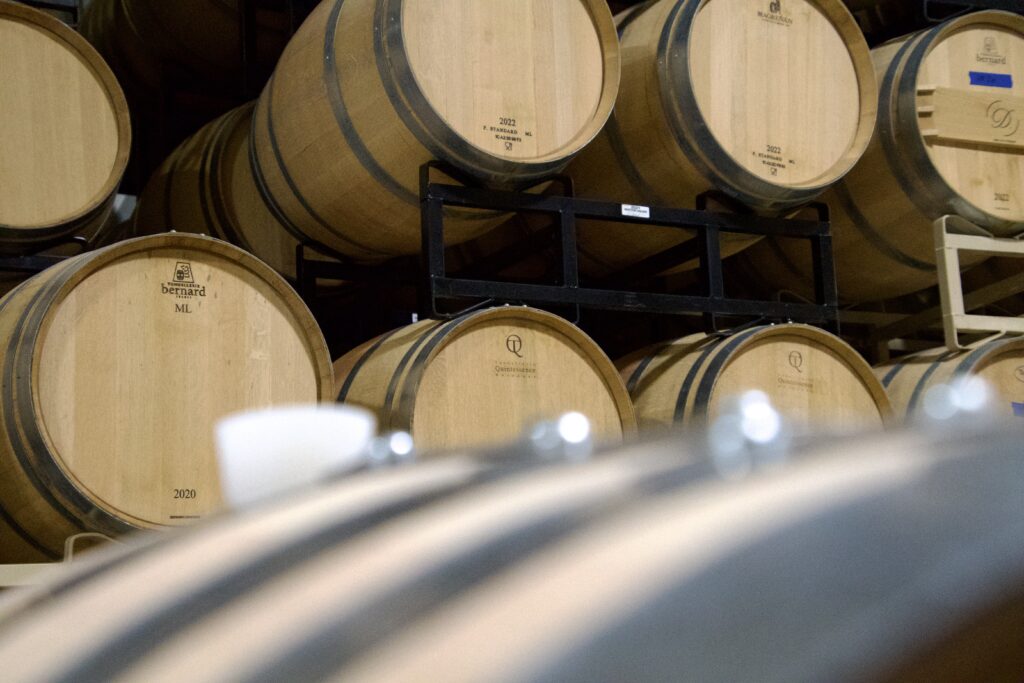
Our Grape varieties
Mourvedre
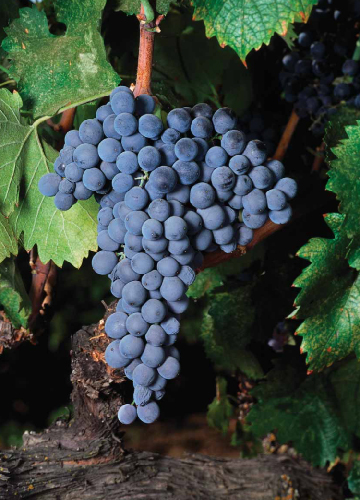
FRUIT: Blueberry, Blackberry, Plum
OTHER: Black Pepper, Violet, Rose, Smoke, Gravel, Meat
OAK: Yes. Usually medium to long oak aging.
TANNIN: High
ACIDITY: Medium (+)
Alcohol by Volume (ABV): 12-15%
Monastrell, Jumilla, Alicante, Mataró, Damas Noir, Pinot Fleri, Mataro, Torrentes, Monastre, Mourves
Bandol (France) and Alicante (Spain) are dominantly Mourvedre. The Rhône, Provence and Corbieres regions use Mourvedre as a blending grape.
Wine historians suspect that the variety is of ancient origin, perhaps introduced to the Barcelona area of Spain by the Phoenicians in 500 BC. The name Mourvèdre is derived from the town of Murviedro in Valencia, and the name of Mataro is derived from the town of Mataró in Catalonia. After the sixteenth century, the variety was brought to France. The grape is thought to have arrived in California in the 1860s in the Pellier collection, a consignment of stock from France to Santa Clara Valley by Louis and Pierre Pellier. It was popular in the Santa Clara Valley in the 1870s, and by the end of the century it was included in Zinfandel vineyards in the North Coast as part of a field blend. Mourvedres’ popularity with grape farmers in Texas is increasing as it is well adapted to the Texas climate and and thrives in both the Texas Hill Country AVA and Texas High Plains AVA. Winemakers enjoy working with Texas Mourvedre because under most conditions Mourvedre in Texas is the last grape to ripen and come off the vine and into the winery. Around the world, Spain is dominant in planted acreage, with lesser plantings in Algeria, France, Australia, California and Texas.
Touriga Nacional

FRUIT: Blackberry, Black Currants, Raspberries
OTHER: Black Pepper, Licorice, Fresh Flower, Wood, Blackberry Seed
OAK: Yes. Medium oak aging.
TANNIN: High
ACIDITY: Medium (-)
Alcohol by Volume (ABV): 12-15%
Bical Tinto, Mortágua, Mortágua Preto, Preto Mortágua, Touriga, Touriga Fina, Tourigao, Tourigo Antigo, Tourigo do Dão and Turiga
Touriga Nacional is a variety of red wine grape, considered by many to be Portugal’s finest.
Texas grown Touriga Nacional is a rarity. Like other Portuguese and Spanish red varieties we feel this grape will be an important variety in our blending and Estate wine programs. Touriga is well suited to the Texas climate and, as wine growers, Touriga Nacional represents an important component in our wine making program.
Touriga Nacional provides structure and body to wine, with high tannins and concentrated flavors of black fruit. Few would dispute that the Touriga Nacional is Portugal’s finest red grape variety, deserving a place right up at the top of the world league of grapes, along with the likes of Pinot Noir, Cabernet Sauvignon and Nebbiolo. Though Northern in origin, it has spread right across the country – you will find it down south in the Algarve and the Alentejo, out west in the Ribatejo/Tejo and Setúbal regions, successfully competing with the local Baga grape in Bairrada, and way out mid-Atlantic in the Azores. Touriga Nacional is a thick-skinned grape, and those skins are rich in color and tannins, giving excellent structure and ageing capacity. But it also has wonderful, intense flavors, at the same time floral and fruity – ripe blackcurrants, raspberries – with complex hints also of herbs and licorice. Yields are never high. The Dão and Douro regions both claim to be the origin of this fine grape.
Arinto
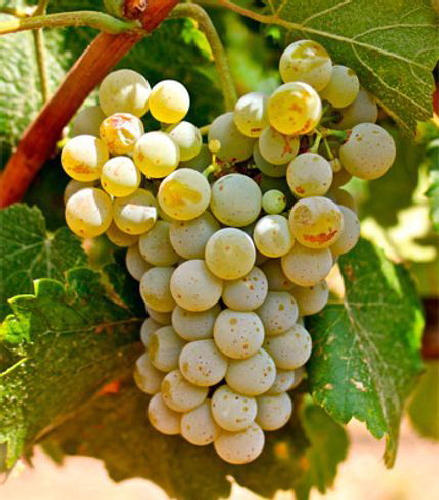
FRUIT: lemon, grapefruit, peach
OTHER: grassy
OAK: Yes. French, American & Stainless
TANNIN: Medium (-)
ACIDITY: High (-)
Alcohol by Volume (ABV): 11 – 12.5%
Arinto is a versatile grape, grown in most of Portugal’s wine regions. In Vinho Verde country, it goes by the name of Pedernã. It makes vibrant wines with lively, refreshing acidity, often with a mineral quality, along with gentle flavors reminiscent of apple, lime and lemon.
Arinto-based wines can keep well but are also delicious young. Because it keeps its acidity, even in hot climates, Arinto is often added to other lower-acid white grapes to improve blends especially in the hot Alentejo and Ribatejo Regions of Portugal.
It makes some of its greatest wines in the small DOC region of Bucelas, just north of Lisbon, where it accounts for at least 75% of blends (along with Sercial and Rabo de Ovelha).
Its good acidity also makes it a great ingredient for sparkling wines and an excellent single variety when aged in French or American Oak. Arinto’s medium-sized bunches are tightly packed with small grapes.
Tempranillo
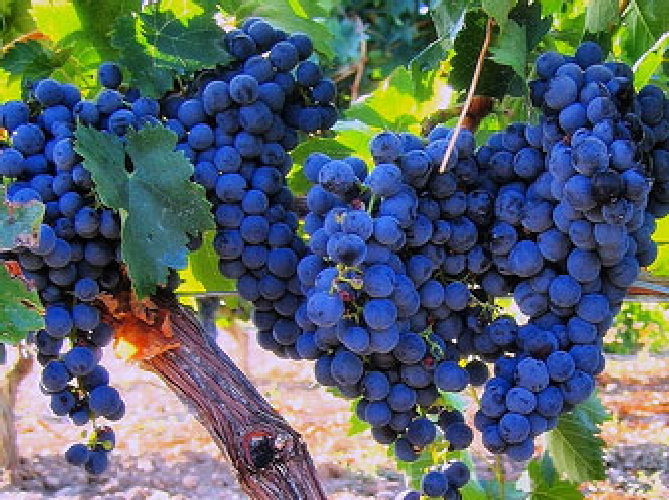
FRUIT: cherry, plum and tomato
OTHER: leather, tobacco, vanilla, and clove
OAK: Yes. Commonly 12-18 mo. in American or French Oak.
TANNIN: Medium (+)
ACIDITY: Medium (-)
Alcohol by Volume (ABV): 13-14.5%
Tinto del Toro, Tinta Fina & Tinto del Pais (Spain); Tinta Roriz & Aragonez (Portugal)
Rioja, Valdepeñas, Ribera del Duero, Crianza, Reserva, Gran Reserva
Tempranillo, arguably the most famous of Spain’s native grapes, is a vibrant, aromatic varietal that offers spicy, red fruit aromas and flavors. The grape’s name translates to “little early one,” a moniker that references fruit’s early ripening tendency to thrive even with a short growing season.
There are numerous and differing accounts of how Tempranillo became one of Texas most planted and consumed grape variety’s. We attribute its success to the common characteristics we share with it’s home range in Portugal & Spain. It has been said that Texas needed a grape to represent the “T for Texas” but we cannot be sure thats true. It doesn’t matter the history at the moment what does matter to us is that Tempranillo is the “T” we believe will represent us and Texas in the world of wine. Texas Tempranillo regularly wins gold in international competitions and proves to be a formidable variety placing Texas among the best in the world.
The varietal shines and is considered at its best in top Riojas, where oak aging is employed to generate increased complexity and harmony. From the best sites, these wines can be remarkably concentrated with great aging potential. New wines from this region are darker, and more robust, with more dynamic primary fruit flavors than traditionally styled examples. These wines seem to reflect the influence of Spain’s other key region for Tempranillo, Ribera del Duero. Regardless of style, Riojas tend to be medium bodied wines, with more acid than tannins. These wines generally feature Tempranillo blended with Garancha, Mazuelo, and Graciano.
In Portugal, Tempranillo is called Tinta Roriz, where it is used to produce wines that are fragrant and complex, with good color, body, backbone, and resistance to oxidation despite possessing only moderate acidity. The second most widely planted variety in the Douro region of Portugal, it is increasingly popular as a stand-alone variety for dry red wines.
Sangiovese
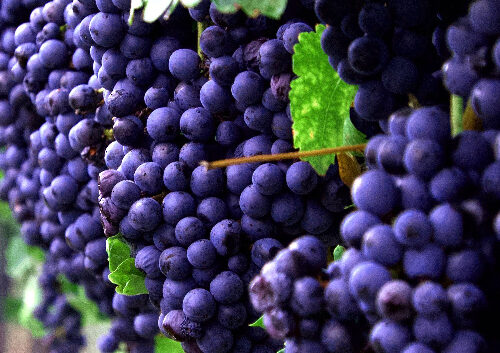
FRUIT: Cherry, Blueberry, Blackberry, Plum
OTHER: Violet, Earthy, Tobacco, Roasted Pepper
OAK: Yes. Light oak, in neutral barrels.
TANNIN: High Tannin
ACIDITY: High
Alcohol by Volume (ABV): 13-14%
Vino Nobile di Montepulciano, Prugnolo Gentile, Sangiovese Grosso, Brunello di Montalcino, Nielluccio, Rosso di Montepulciano, Morellino, Rosso di Montalcino, Montefalco Rosso, Chianti, Morellino di Scansano
Sangiovese is best known for providing the backbone for many superb Italian red wines from Chianti and Brunello di Montalcino, as well as the super-Tuscan blends. From the Latin for sanguis Jovis, or “the blood of Jove.”
Sangiovese is a dry, medium-bodied red wine that tips towards higher levels of acidity and tighter tannins. The rich flavors range from rustic to fruity, depending on where and how the vines are managed. Expect cherry — red, black, sour — smoke and earthy herbaceousness, spicy oak-induced nuances and peppery tones and even streaks of sweet tobacco to show up in a given bottle of Sangiovese.
